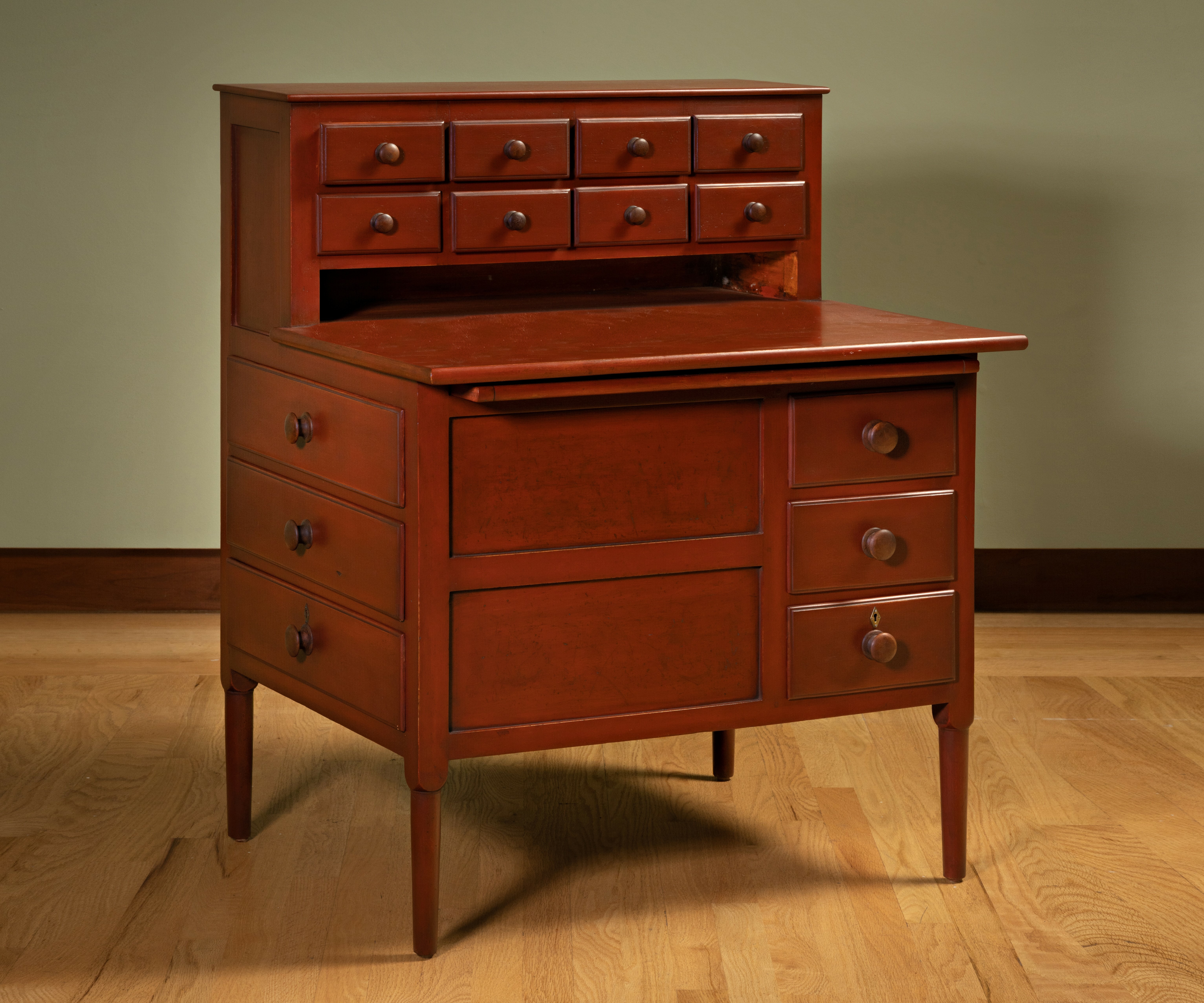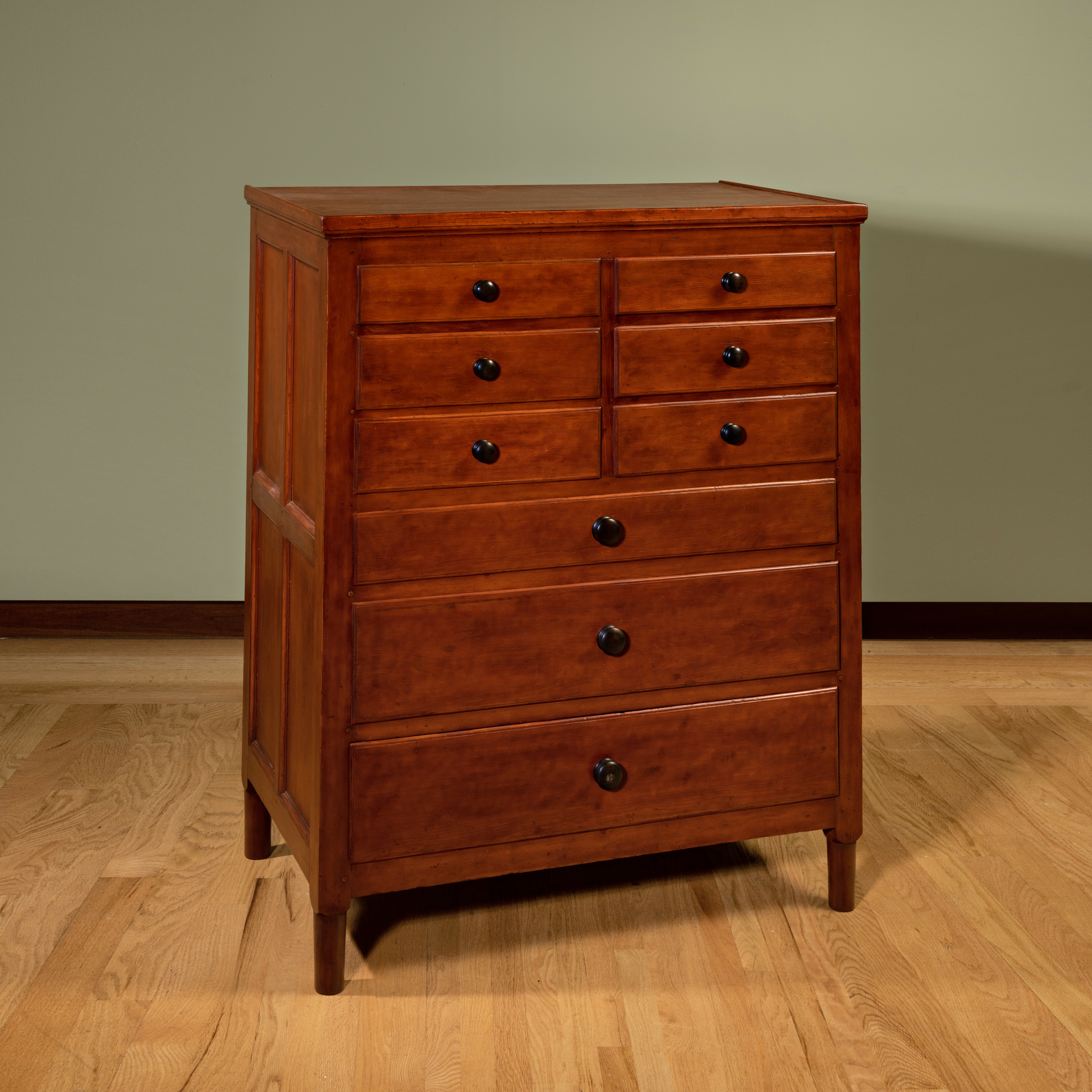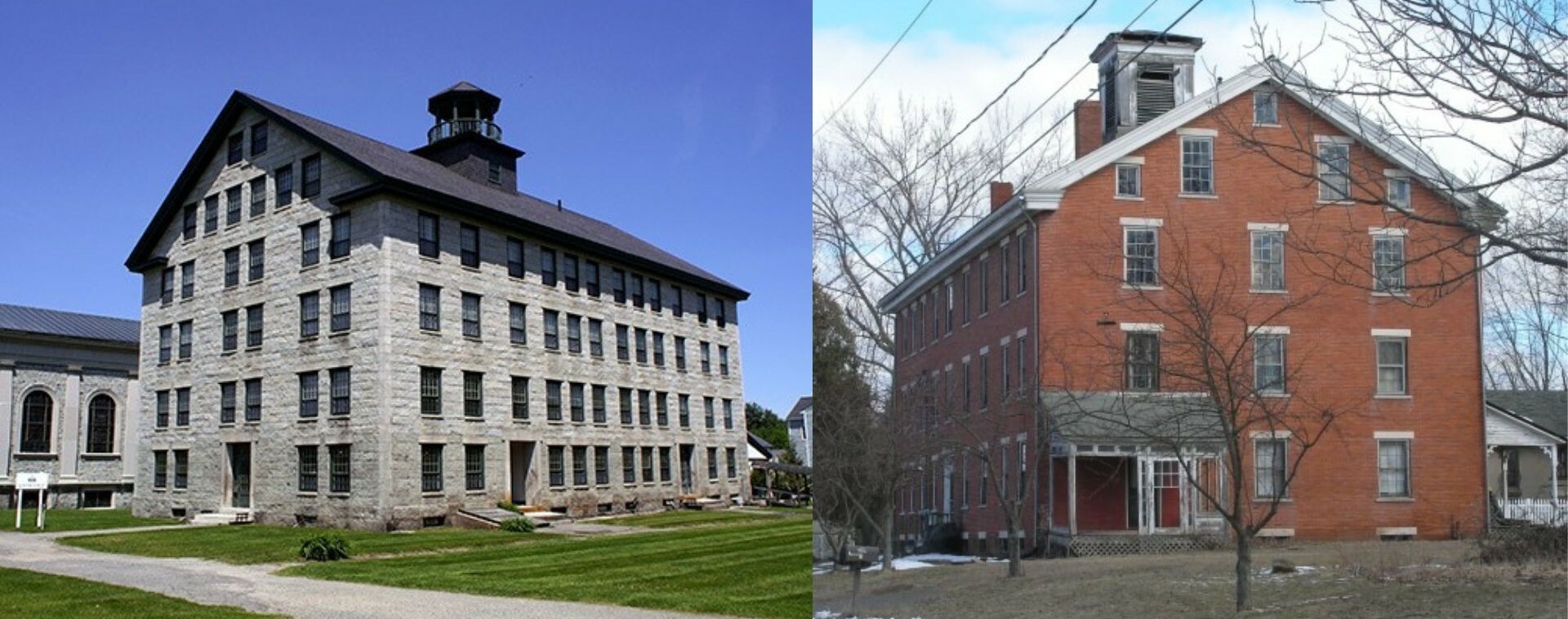ABOUT THE EXHIBITION
Masterworks of Shaker Design: A Tale of Two Enfields
This is the first of a planned series of exhibitions designed to highlight examples of the finest Shaker craftsmanship from the past 175 years. Each exhibition will focus on objects from a single or pair of Shaker communities or from loans from particular collections. In most instances, collaborations between the New Britain Museum of American Art and individual collectors or institutions will be the rule. This is the case with Masterworks of Shaker Design: A Tale of Two Enfields.
In August 1774, a small band of eight “Shaking Quakers” arrived in New York from England. They were led by a charismatic woman named Ann Lee. That was an inauspicious start for a sect that would eventually have an influence far disproportionate to its tiny size. Once their Testimony was opened to the World in May 1780, hundreds were attracted to “The United Society of Believers in Christ’s First and Second Appearing,” and the Believers quickly spread from New York State into New England. In 1787, their first fully formed community was gathered into Gospel Order at New Lebanon, New York. Over the next several decades, seventeen more long-lasting Shaker villages were established, extending from Maine to Kentucky. Two of these communities happened to be close to towns sharing the same name: Enfield, Connecticut (1792-1917) and Enfield, New Hampshire (1793-1923). By the mid-1800s, their numbers had swelled to well over 4,000 members in eighteen communities.
There are certain characteristics of Shaker craftsmanship that were common to objects made at each of their communities: meticulous fabrication techniques; use of the finest available materials; a paring down of forms that were omnipresent in the non-Shaker World (often referred to as simplification); and the priority given to utility or function. What is still unclear after many years of diligent scholarship—searching through voluminous records that recorded even the smallest details of their daily life—is why furniture from widely separated Shaker villages has the look. That is, why do they have the distinctive appearance that distinguishes them from objects in the world around them? This certainly seems to be part of their present-day appeal—“the Shaker look”! Most of the objects displayed here have also survived in exceptional condition for nearly two hundred years, a mute testament to their high level of construction and subsequent level of care.
Shakers began fabricating their own furnishings almost as soon as they were “gathered into community.” Their basic tenets, often referred to as “the three C’s”—Communal ownership of all goods (beds, tools, clothing, etc.), regular Confession (in private), and Celibacy, along with pacifism—set them apart from the World. Living in villages physically separated from their neighbors and becoming relatively self-sufficient from others confirmed their differences. With minimal experience, it is usually quite easy to distinguish Shaker-made from Worldly-made goods.
The NBMAA is most grateful to the following lenders for making A Tale of Two Enfields possible: Charles Cybulski, Dr. Don G. Wartella, Enfield Shaker Museum, Enfield, NH, and the Miller Collection
- M. Stephen Miller, Guest Curator
Click here to listen to Steve Miller on iCRV Radio.
Related Programming
Gallery Talk | "Masterworks of Shaker Design: A Tale of Two Enfields" with Guest Curator M. Stephen Miller
Wednesday, March 22, 1 p.m.
Distinguished Lecturer Lehman Fund | Stephen J. Paterwic
Saturday, May 13, 1 p.m.
Featured Press
Art review: How can Shaker furniture be so alike when communities were miles apart?
By Tracey O'Shaughnessy, Republican-American, April 10, 2023


